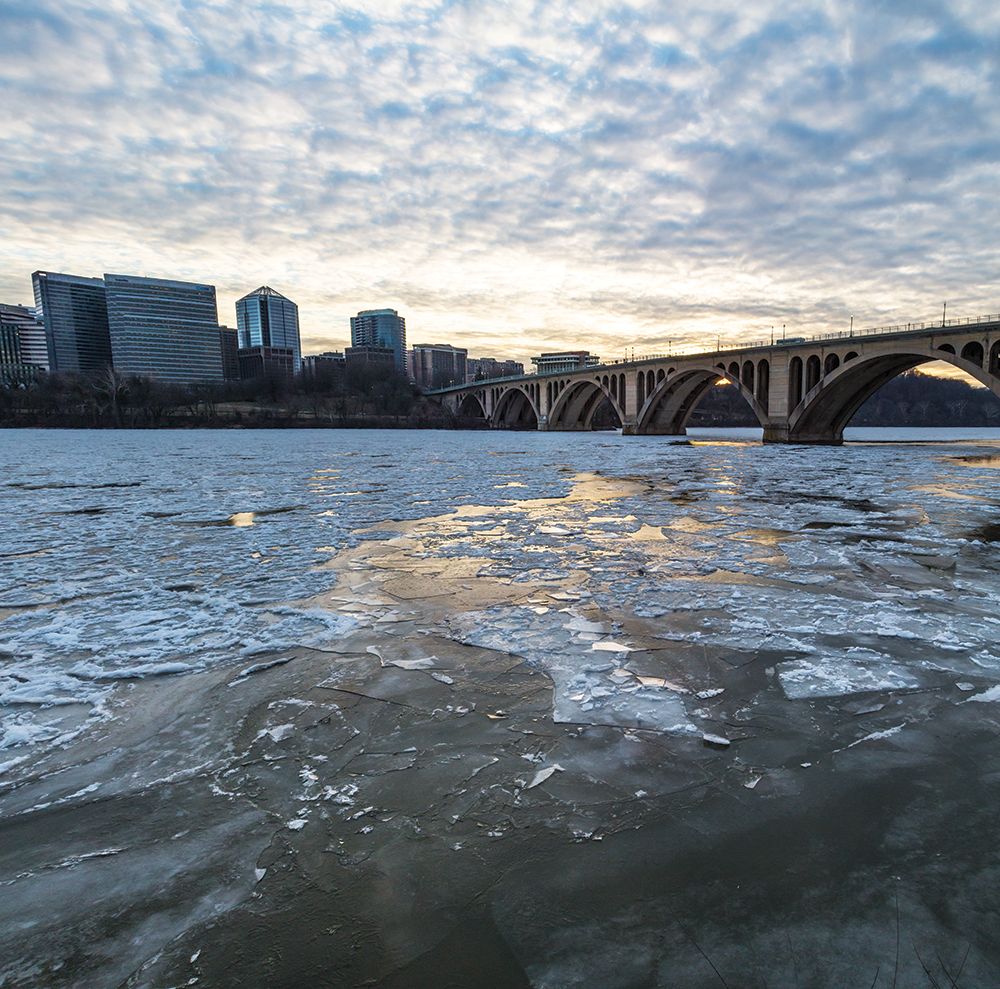Several students reported icy conditions around campus, causing accidents on the sidewalks late Sunday night and early Monday morning. The university announced a delayed opening and the option for liberal leave on Monday.
Andrew Walker (SFS ’16) said the area outside of Lauinger Library was especially treacherous around 1 a.m. Monday morning. Other students and security guards were worried about the walkway and a Georgetown Emergency Response Medical Service ambulance was nearby attending to a case.
“Someone had just come in after giving up [on] getting out of Lau because the brick patch in front of it was just covered in a sheet of ice that you could barely see. If he hadn’t stopped us, [my friend and I] would have had no idea that it was there and we both would have slipped and it was brutal,” Walker said. “I was really lucky that someone explained to us how bad this was.”
Sydney Brooks (COL ’18) described similar conditions near the front gates as she walked off campus on her way to Saxbys Coffee Monday morning.
“It looked like it was just slush, but it turns out there was ice underneath,” she said. “The path there could have been salted or something so the ice would melt quicker.”
The D.C. Council passed a bill in November to issue fines of $25 to people and $150 to businesses that did not clear snow from their property within eight hours. Additionally, if injuries occur on private property, defendants may be able to recover the cost of their medical bills from the owners of the property.
While GERMS responses remain confidential, Captain Brian Monahan (COL ’15) said they received several weather-related calls in the past days, adding that the roads or sidewalks that have not been shovelled or salted within GERMS boundaries are mainly off-campus in West Georgetown or Burleith.
“This is a normal occurrence that happens whenever sidewalks are wet or icy,” Monahan wrote in an email. “If we start to see trends in the data with regards to ice-related incidents I will follow up with the university to attempt to alleviate the problem.”
On Sunday, specifically, Associate Vice President for Risk Management Joseph Yohe said the university was only officially notified of two incidents of students slipping on ice, both of which took place off campus. With regard to student accidents and liability concerns, the Planning and Facilities Management Office has protocol for evaluating the responsibility of the university.
“Each incident resulting in injury has a unique set of facts and circumstances, and the University evaluates each incident individually,” Yohe wrote in an email to The Hoya.
Yohe further explained in such cases of inclement weather, campus leaders review conditions, looking at reports from the National Weather Service, the Metropolitan Washington Council of Governments and the federal government’s Office of Personnel Management, among others, and then act accordingly.
“The decision to have a 10 a.m. delayed arrival and the option of liberal leave was based on the best weather predictions and the safety interests of the Georgetown community,” Yohe wrote. “We wanted to provide our students, faculty, staff and visitors with as much advance notice as possible that the weather conditions could adversely impact the campus and the rush hour commute.”
Moving forward, Yohe did not anticipate any changes in university protocol for closings or delayed openings.
Despite the accidents near campus and the continued icy conditions, Monahan praised the university’s response to inclement weather.
“As someone who has lived in the Northeast my entire life, I would say the university has done a very good job especially this past week dealing with the ice and snow. All university roads and sidewalks that I have seen on campus have been plowed and salted,” he wrote.
During times of inclement weather, GERMS takes extra steps to remain open and attentive to calls.
“We often consolidate the entire crew to remain in our office which helps cut down on response times when the ambulance needs to drive slowly when responding to calls,” Monahan wrote. “If there is significant snow on the ground we have the ability to put tire chains on the ambulances to help with driving. We also make sure there is an experienced driver who has had multiple hours of experience driving the ambulance during these times.”
Hoya Staff Writer Katherine Richardson contributed reporting.





















